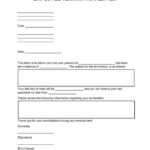
A travel influencer is facing backlash after sharing a video showcasing her strategy for achieving comfort on long-haul flights, which involves placing a blanket on the airplane floor and occupying that space during the journey. The video, posted on TikTok, has ignited debate, with some viewers criticizing the move as inconsiderate and unhygienic, while others defend it as a harmless attempt to maximize comfort within the constraints of air travel.
The controversy centers around Tiffany Gomas, also known as the “crazy plane lady” due to a previous viral incident, who posted a TikTok video demonstrating her approach to securing extra space on a recent flight. In the video, Gomas is seen spreading a blanket in the aisle and utilizing the floor space for lounging. This act sparked a barrage of comments, ranging from accusations of selfishness to expressions of support for her resourcefulness.
Critics argue that Gomas’s actions infringe upon the personal space of other passengers and pose potential safety hazards. Concerns have also been raised about the cleanliness of airplane floors and the potential for spreading germs. Supporters, however, contend that Gomas was not harming anyone and was simply trying to make the best of a potentially uncomfortable situation.
The incident highlights the ongoing tension between individual comfort and shared responsibility in the confined environment of air travel. It also raises questions about the evolving role of social media in shaping public perception and sparking online debates. Gomas has yet to publicly address the controversy directly, but the video continues to circulate online, fueling the discussion.
The debate ignited after Gomas posted the video, showcasing how she created a “comfy zone” on the floor of the aircraft. “Okay, so I am in the aisle seat because this is how I create ‘comfy zone’ on airplanes,” Gomas explained in the video. She then proceeded to spread out a blanket, using the space to stretch out and relax during the flight.
The video immediately went viral, garnering millions of views and thousands of comments. The reaction was sharply divided, with many people condemning Gomas’s behavior as entitled and inconsiderate. These critics argued that using the aisle as personal space obstructed other passengers and created a safety hazard. Some comments also pointed out the unsanitary nature of lying on the airplane floor. One user commented, “That’s incredibly selfish. The aisle is for everyone to walk through, not for you to create a personal lounge.”
However, Gomas also received support from some viewers who saw her actions as a clever way to make air travel more comfortable. These defenders argued that as long as Gomas wasn’t directly impeding other passengers or violating any airline rules, she was within her rights to use the available space as she saw fit. One commenter stated, “Good for her! If the airline isn’t providing adequate comfort, people will find ways to create their own.”
Adding fuel to the fire is Gomas’s prior notoriety as the “crazy plane lady.” In July 2023, she was involved in a highly publicized incident at Dallas-Fort Worth International Airport, where she reportedly made a series of erratic statements before being removed from a flight. The incident went viral, earning her the moniker and cementing her place in internet infamy. The resurgence of attention following the “comfy zone” video has prompted many to revisit the previous incident and question Gomas’s overall behavior in public spaces.
The airline involved in Gomas’s “comfy zone” flight has not been publicly identified, and it remains unclear whether her actions violated any specific airline policies. Most airlines have rules prohibiting passengers from obstructing aisles or creating safety hazards, but the interpretation of these rules can be subjective.
Regardless of the specific airline regulations, the incident has raised broader questions about etiquette and consideration during air travel. As airlines continue to shrink seat sizes and cram more passengers onto flights, tensions surrounding personal space and comfort are likely to escalate. The Gomas controversy serves as a microcosm of these larger issues, prompting a debate about the balance between individual needs and the collective good in the often-stressful environment of air travel.
The incident has also spurred discussions about the role of social media in shaping public perception. Gomas’s video, initially intended to showcase a creative travel hack, quickly became a lightning rod for criticism. The speed and intensity of the online reaction highlight the power of social media to amplify both positive and negative opinions. Furthermore, the association with her previous “crazy plane lady” incident demonstrates how past actions can continue to influence public perception, particularly in the age of viral content.
The controversy also brings to light the increasing pressure on social media influencers to create engaging content. In a crowded online landscape, influencers are constantly seeking new ways to attract attention and grow their audiences. While some may view Gomas’s “comfy zone” video as a harmless attempt to offer travel tips, others see it as a calculated move to generate controversy and boost her online profile.
The debate surrounding Gomas’s “comfy zone” is unlikely to subside anytime soon. The video continues to circulate online, and the hashtag associated with the incident has become a popular topic of discussion. Whether Gomas’s actions are ultimately viewed as inconsiderate or ingenious, the controversy has undoubtedly sparked a broader conversation about etiquette, comfort, and personal responsibility in the context of modern air travel.
Several experts on travel etiquette have weighed in on the controversy, adding further depth to the debate. Diane Gottsman, a national etiquette expert and author of “Modern Etiquette for a Better Life,” emphasized the importance of considering the needs of fellow passengers. “Air travel requires a certain level of consideration for others,” Gottsman stated. “While comfort is important, it should not come at the expense of other passengers’ safety or convenience. Blocking the aisle is generally not acceptable.”
However, other experts have offered a more nuanced perspective. Lizzie Post, co-president of the Emily Post Institute and author of several books on etiquette, acknowledged the challenges of modern air travel and the desire for increased comfort. “Air travel can be incredibly stressful, and people are often looking for ways to cope,” Post explained. “While spreading out on the floor may not be the most socially graceful solution, it’s important to consider the context and intent. If the passenger is not directly impeding others or violating airline rules, it may be a matter of personal preference.”
The Association of Flight Attendants-CWA (AFA), the largest union representing flight attendants in the United States, has also issued a statement regarding the incident. The AFA emphasized the importance of following crewmember instructions and adhering to airline policies. “Flight attendants are trained to ensure the safety and comfort of all passengers,” the AFA statement read. “Passengers should always follow the instructions of the crew and respect airline policies regarding aisle obstruction and safety procedures.”
The controversy has also prompted discussions about potential solutions to address the lack of comfort on airplanes. Some passengers have suggested that airlines should offer more comfortable seating options or provide designated areas for stretching and relaxation. Others have advocated for stricter enforcement of existing airline policies regarding aisle obstruction and passenger behavior.
The incident serves as a reminder of the evolving dynamics of air travel and the need for ongoing dialogue about etiquette, comfort, and personal responsibility. As airlines continue to adapt to changing passenger demands and technological advancements, it is crucial to find solutions that balance the needs of individual travelers with the collective good of the flying public. The debate surrounding Gomas’s “comfy zone” highlights the complexity of these issues and the importance of fostering a culture of respect and consideration in the skies.
The “comfy zone” incident is not an isolated event, but rather part of a broader trend of viral travel-related controversies. In recent years, social media has been flooded with videos and images of passengers engaging in questionable behavior on airplanes, ranging from reclining seats too far to arguing with flight attendants. These incidents often spark intense online debates, highlighting the challenges of navigating shared spaces and conflicting expectations in the age of social media.
The increasing prevalence of these controversies underscores the need for greater awareness and education about travel etiquette. Airlines, travel organizations, and social media platforms can play a role in promoting responsible behavior and fostering a culture of respect among travelers. By encouraging open dialogue and providing clear guidelines, it may be possible to mitigate some of the tensions that arise in the confined environment of air travel.
The incident has also prompted discussions about the potential legal ramifications of obstructing an airplane aisle. While it is unlikely that Gomas will face criminal charges for her actions, she could potentially be held liable for damages if her behavior caused injury or inconvenience to other passengers. In general, passengers are expected to exercise reasonable care and avoid actions that could endanger or disrupt the safety and comfort of others.
The legal implications of such incidents can be complex and depend on the specific circumstances. Airlines typically have the authority to remove passengers who violate their policies or pose a safety threat, and passengers who engage in disruptive behavior may also face civil penalties or be banned from future flights. The Gomas controversy serves as a reminder of the importance of understanding and complying with airline rules and regulations.
Looking ahead, it is likely that the debate surrounding air travel etiquette and personal space will continue to evolve. As technology advances and travel patterns change, new challenges and opportunities will emerge. It is crucial for passengers, airlines, and policymakers to work together to find solutions that promote a safe, comfortable, and respectful travel experience for all.
The Gomas incident has become a case study in the power of social media to shape public perception and ignite online debates. The video of her “comfy zone” quickly went viral, garnering millions of views and sparking a flurry of comments and reactions. The incident highlights the challenges of navigating the digital landscape and the importance of responsible online behavior.
Social media influencers, in particular, face a unique set of responsibilities. As individuals with large and engaged audiences, they have the power to influence opinions and shape trends. However, they also face scrutiny and criticism when their actions are perceived as irresponsible or inconsiderate. The Gomas controversy serves as a reminder of the importance of ethical considerations in the age of social media.
The ripple effects of the “comfy zone” incident are likely to be felt throughout the travel industry. Airlines may revisit their policies regarding aisle obstruction and passenger behavior, and travelers may become more aware of the potential for conflict in shared spaces. The incident also underscores the need for greater emphasis on empathy and understanding in the context of air travel. By fostering a culture of respect and consideration, it may be possible to create a more positive and harmonious travel experience for all.
The Gomas situation also raises questions about mental health and public shaming. Given her prior incident and the subsequent online backlash, there are concerns about the impact on her well-being. While accountability for one’s actions is important, the level of public scrutiny and criticism can be overwhelming. This highlights the need for greater sensitivity and awareness when discussing and responding to such incidents online.
The controversy also underscores the importance of critical thinking and media literacy. Not everything that is posted online is accurate or representative of the full story. It is crucial to evaluate information carefully and avoid jumping to conclusions based on incomplete or biased sources. The Gomas incident serves as a reminder of the need to approach social media with a healthy dose of skepticism and a commitment to responsible online behavior.
The “comfy zone” incident is a complex and multifaceted issue with no easy answers. It highlights the challenges of navigating shared spaces, conflicting expectations, and the power of social media. By fostering open dialogue, promoting responsible behavior, and embracing empathy and understanding, it may be possible to create a more positive and harmonious travel experience for all. The incident serves as a reminder of the importance of continuous learning and adaptation in a rapidly changing world.
The long-term implications of the Gomas incident remain to be seen. It is possible that it will fade from public memory over time, but it is also possible that it will have a lasting impact on travel etiquette, social media behavior, and the public perception of Gomas herself. Only time will tell what the ultimate legacy of the “comfy zone” controversy will be.
The incident provides a valuable opportunity for reflection and growth. By examining the issues raised and learning from the experiences of others, it may be possible to create a more just, equitable, and compassionate society. The Gomas controversy serves as a reminder of the importance of continuous learning, adaptation, and a commitment to the common good.
Frequently Asked Questions (FAQ)
1. Who is Tiffany Gomas and why is she relevant to this news story?
Tiffany Gomas is a travel influencer who gained notoriety after a viral video of her outburst on a plane in July 2023, earning her the nickname “crazy plane lady.” She is relevant to this news story because she posted a TikTok video demonstrating how she creates a “comfy zone” on airplanes by spreading a blanket on the floor and using the space to stretch out. This video sparked a debate about etiquette and personal space on flights.
2. What exactly did Tiffany Gomas do in the “comfy zone” video that caused controversy?
In the video, Gomas spread a blanket on the airplane aisle floor and used the space to stretch out and relax during the flight. This was perceived by some as inconsiderate and unhygienic, arguing that it obstructed the aisle and posed a safety hazard. Others defended her actions as a resourceful way to maximize comfort within the limitations of air travel, as long as she wasn’t impeding other passengers or violating airline rules.
3. Has the airline involved in the incident commented on Tiffany Gomas’s actions?
The article does not specify the airline Gomas was flying with. It also states that it remains unclear whether her actions violated any specific airline policies. Most airlines have rules prohibiting passengers from obstructing aisles or creating safety hazards, but the interpretation of these rules can be subjective. The airline has not issued any public statement on the matter.
4. What are the potential consequences for passengers who obstruct airplane aisles?
Passengers who obstruct airplane aisles can face a range of consequences, depending on the specific airline policies and the severity of the obstruction. They may be asked by flight attendants to remove the obstruction, issued a warning, or, in more serious cases, removed from the flight. They could also potentially be held liable for damages if their behavior caused injury or inconvenience to other passengers. Airlines typically have the authority to remove passengers who violate their policies or pose a safety threat, and passengers who engage in disruptive behavior may also face civil penalties or be banned from future flights.
5. What lessons can be learned from the Tiffany Gomas “comfy zone” controversy regarding travel etiquette and social media behavior?
The Tiffany Gomas “comfy zone” controversy highlights the importance of considering the needs of fellow passengers, especially in the confined environment of air travel. It underscores the need for a balance between individual comfort and shared responsibility. Regarding social media behavior, the incident demonstrates the power of social media to shape public perception and ignite online debates. It also serves as a reminder of the importance of ethical considerations in the age of social media, as influencers and individuals alike should be mindful of the potential impact of their online actions and the need for responsible online behavior.









